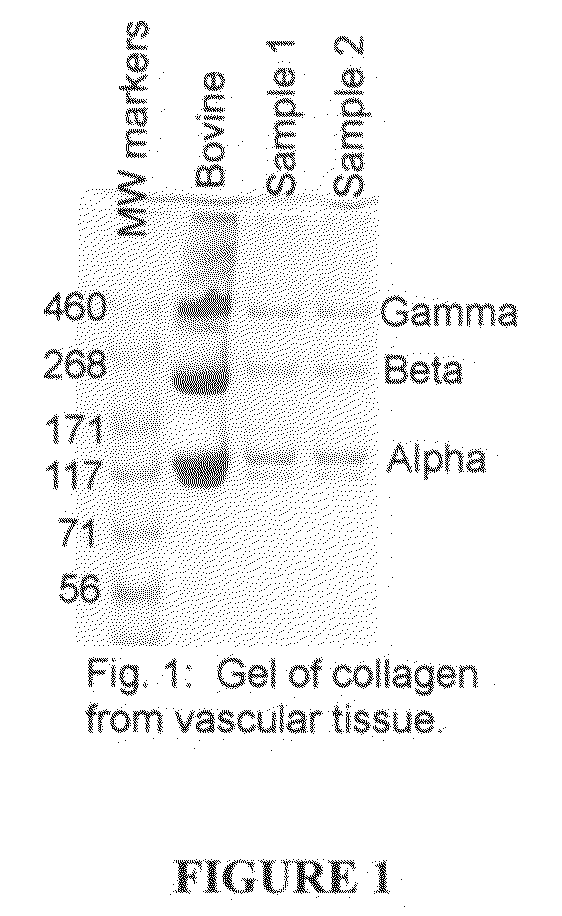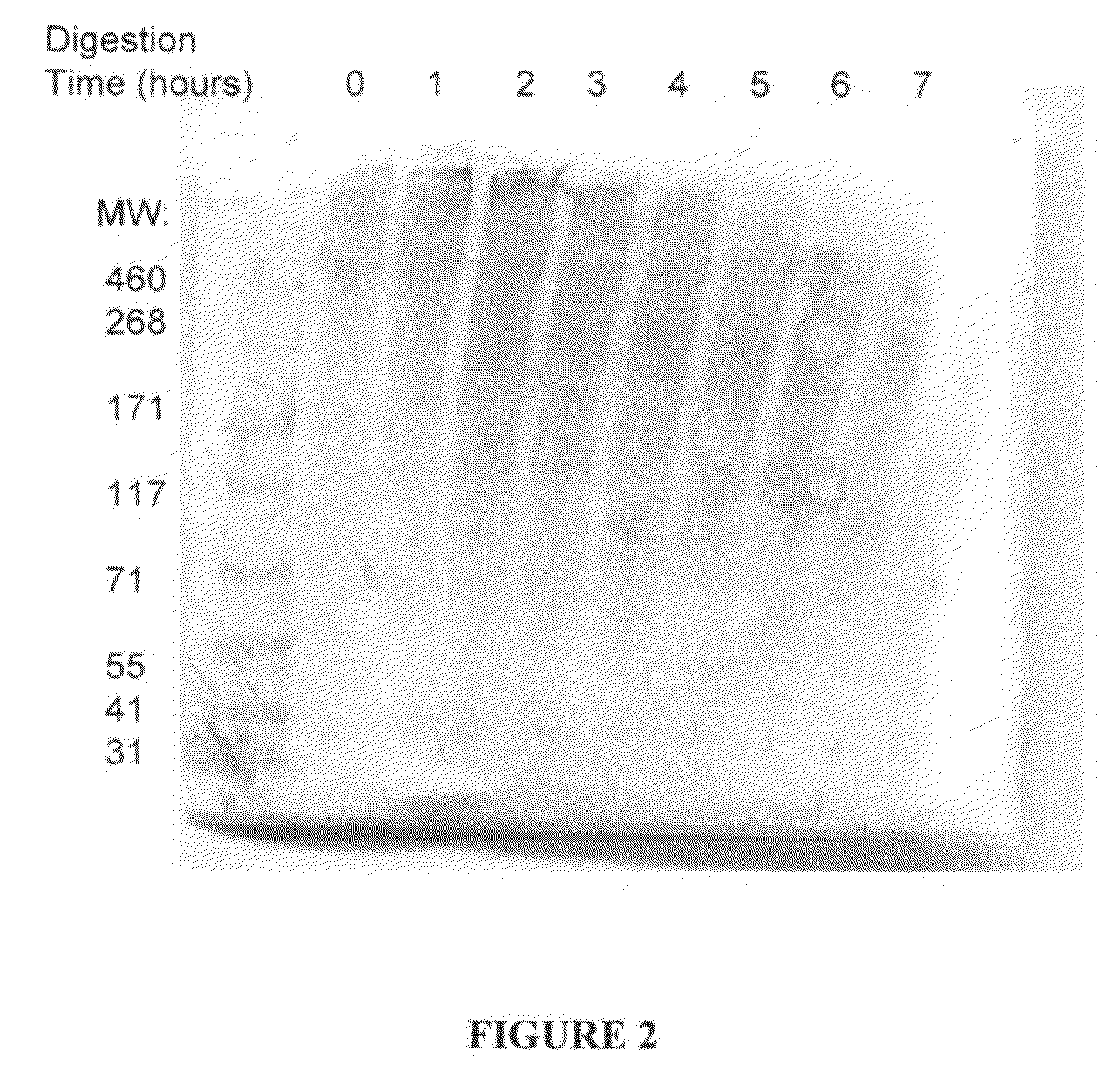Compositions and methods for soft tissue augmentation
a soft tissue and composition technology, applied in the field of compositions and methods for soft tissue augmentation, can solve the problems of skin drooping and wrinkles, weak healing complications, and elastin breakdown, and achieve the effect of increasing tissue volum
- Summary
- Abstract
- Description
- Claims
- Application Information
AI Technical Summary
Benefits of technology
Problems solved by technology
Method used
Image
Examples
example 1
Isolation of Collagen from Engineered Vascular Tissue
[0093]Vascular tissues are engineered from human vascular smooth muscle cells according to methods as previously described (Niklason et al., Science 284(5413):489-93, 1999). Briefly, vascular smooth muscle cells from screened and banked human vascular cell sources are seeded onto a tubular synthetic fibrous scaffolding comprising polyglycolic acid fibers. The tubular seeded scaffold is threaded over distensible silicone tubing within a sterile bioreactor. The bioreactor is filled with culture medium that supports the synthesis of collagen by vascular cells. Specifically, this medium comprises Dulbecco's Modified Eagles Medium (DMEM) supplemented with 20% fetal bovine serum or other serum, ascorbic acid (50 mg / L), growth factors such as platelet derived growth factor (10 ng / mL), basic fibroblast growth factor (10 ng / mL), epidermal growth factor (3 ng / mL), proline 50 mg / L, glycine 50 mg / L, alanine 20 mg / L, copper sulfate 3 ng / mL. Ot...
example 2
Isolation of Elastin from Engineered Vascular Tissue
[0112]Synthesis of cross-linked, insoluble elastin in cultured cells is typically quite difficult. While many reports exist of synthesis of non-crosslinked tropoelastin monomers, creation of documented, cross-linked elastin is extremely rare. Most reports of production of insoluble elastin utilize cells that have been genetically engineered, for example to express high levels of tropolelastin protein, or to express variants of versican that stimulate elastin deposition. Alternatively, rodent cells derived from neonatal animals have been reported to synthesize elastin. However, non-human elastin is associated with risks of immune rejection if injected into a human recipient. Further, utilizing genetically modified cells to generate human elastin carries intrinsic risks of passing on transgene material to any eventual recipient of the extracellular matrix material.
[0113]Hence, it is advantageous to devise methods to generate crosslin...
example 3
Isolation of Elastin from Native Human Umbilical Vessels
[0135]Elastin is isolated from native human blood vessels, such as those isolated from discarded umbilical cords. Vessels are decellularized and then elastin is isolated from the resultant extracellular matrix. The solutions for decellularization process are those described in Example 1. Steps used in the decellularization and elastin isolation process are as follows:
[0136]1. Thaw frozen umbilical artery or vein overnight at 4° C.
[0137]2. Record vessel length and weight.
[0138]3. Decellularize vessel in Solution 1 for 12 hr.
[0139]4. Rinse 2 times with phosphate buffered saline, 5 min each.
[0140]5. Decellularize in Solution 2 for 12 hr.
[0141]6. Rinse 3 times with phosphate buffered saline, 5 min each.
Digest decellularized umbilical artery or vein with pepsin or collagenase at 37° C. or room temperature for 1-5 hr with gentle shaking. This removes non-elastin extracellular matrix components.
[0142]7. Alternatively, decellularized v...
PUM
| Property | Measurement | Unit |
|---|---|---|
| molecular weight | aaaaa | aaaaa |
| molecular weight | aaaaa | aaaaa |
| molecular weights | aaaaa | aaaaa |
Abstract
Description
Claims
Application Information
 Login to View More
Login to View More - R&D
- Intellectual Property
- Life Sciences
- Materials
- Tech Scout
- Unparalleled Data Quality
- Higher Quality Content
- 60% Fewer Hallucinations
Browse by: Latest US Patents, China's latest patents, Technical Efficacy Thesaurus, Application Domain, Technology Topic, Popular Technical Reports.
© 2025 PatSnap. All rights reserved.Legal|Privacy policy|Modern Slavery Act Transparency Statement|Sitemap|About US| Contact US: help@patsnap.com



